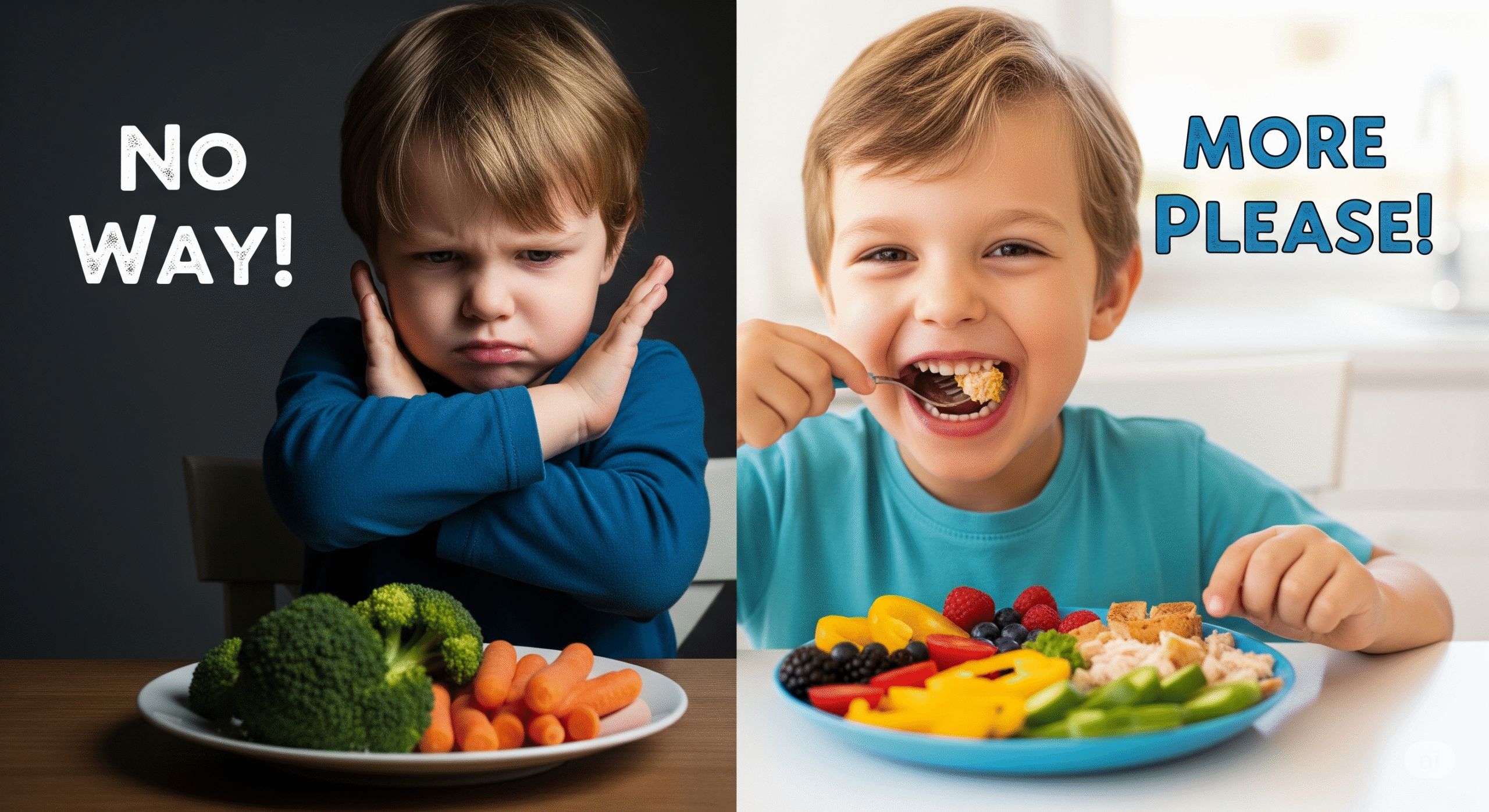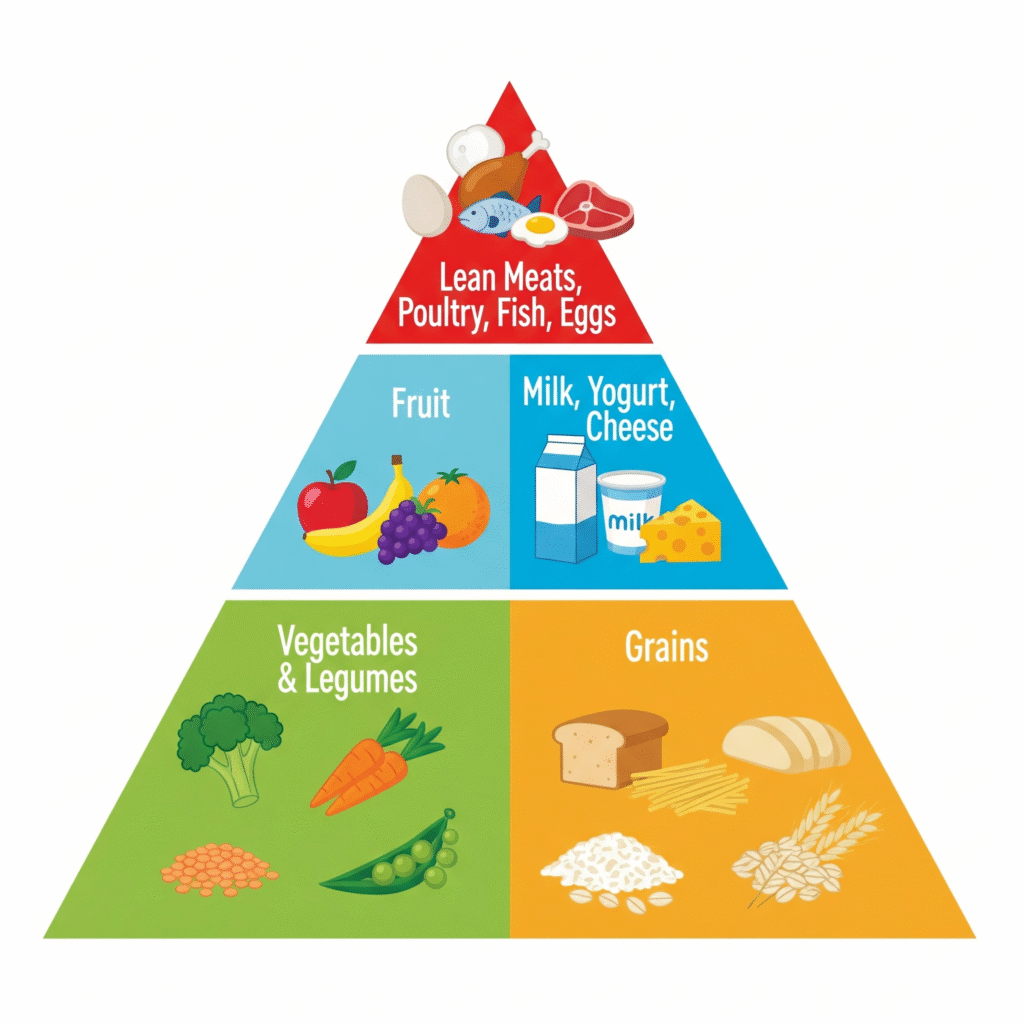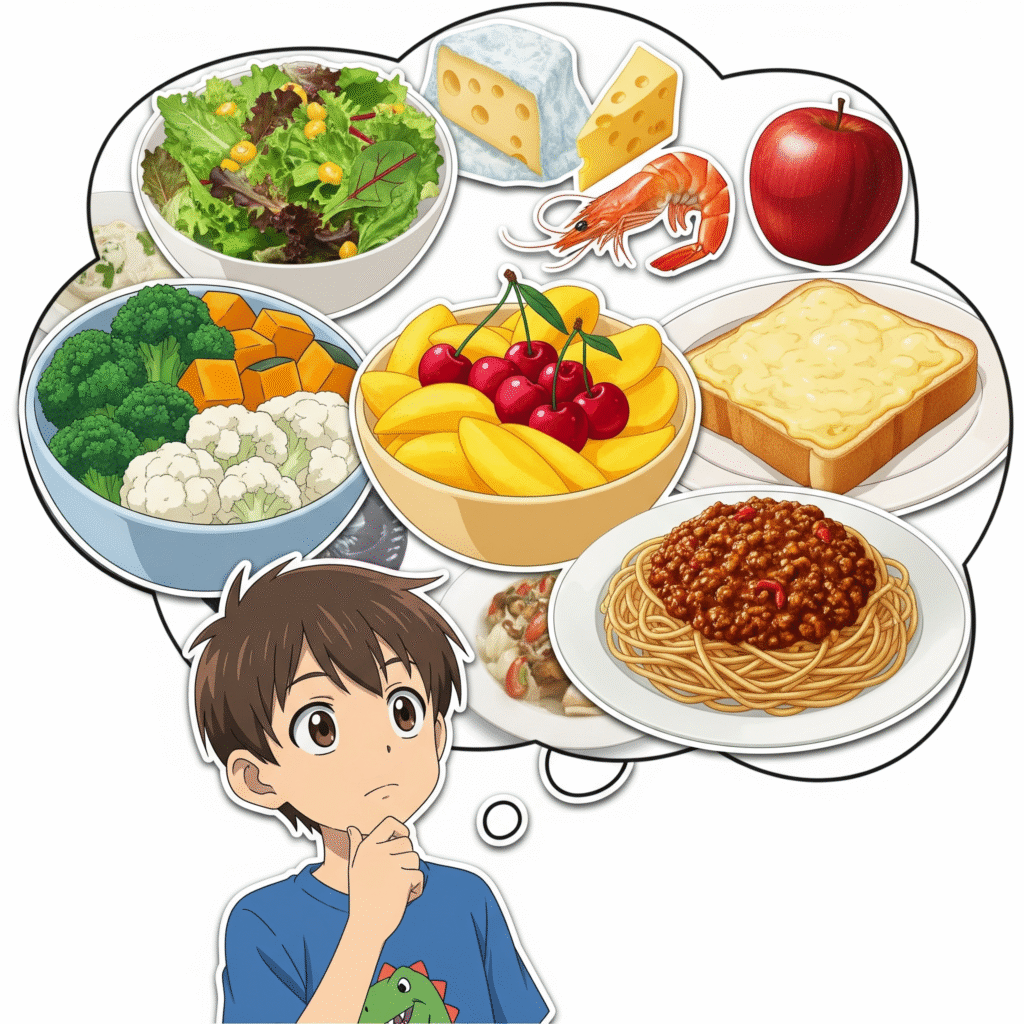Physical Address
304 North Cardinal St.
Dorchester Center, MA 02124
Physical Address
304 North Cardinal St.
Dorchester Center, MA 02124

When it comes to feeding our little ones who have started their journey with solid foods, it can sometimes feel like navigating a minefield of opinions and dietary philosophies. Everyone knows about the food pyramid and what the recommendations are, but with more and more people adhering to various diets, from vegan to paleo and everything in between, everyone seems to have a view on what kids should and shouldn’t eat.
While personal dietary choices are certainly a family matter, the fundamental science behind nourishing a growing child isn’t quite as contentious. For a solid foundation, we can turn to well-established guidelines, such as the Australian Dietary Guidelines, which provide a clear and evidence-based framework for healthy eating.
Let’s quickly look at the building blocks before diving into the real-life chaos of trying to get kids to actually eat them.
The Australian Dietary Guidelines emphasize five core food groups that provide the essential nutrients children need for healthy growth and development:

Now, I hope your kids are the amazing kind we hear stories about, the ones who will happily eat whatever is put in front of them. If so, I am incredibly jealous! Our experience has been a little… different. As most parents know, theory is one thing, but a fussy toddler is another thing entirely.
When our kids first started solids, everything seemed to be a goer. They’d happily try anything, though more often than not, it would come straight back up. Let’s just say we became experts at cleaning up spit-up and vomit. It’s all part of the job description, I guess.
Here’s a little snapshot of how the five food groups play out in our household:

We haven’t found any particular pattern to their likes and dislikes; I guess it’s just them developing their own little personalities. However, we know a balanced diet is what they need to grow up healthy.
What the science points to is that every child needs a balanced diet to grow up healthy and strong. So what’s next? Our job as parents is to do our best to ensure they get that balance. Below are a few strategies that have worked for us. Hopefully, they give you some insights you can adapt for your own little ones.
1. Identify Likes and Dislikes First and foremost, get a clear picture of your battlefield. When you eat with your kids day in and day out, you start to notice the patterns, what they’ll devour and what they’ll push away with disgust. Keep a mental note of these, or even write them down. Your strategies will need to revolve around this core intel.
2. Get Them to Try Everything (But Don’t Force It) Forcing a child to eat something is almost always a recipe for disaster. The moment they feel forced, the walls go up, and you’re met with a loud “No!” or a full-blown screaming match. It just doesn’t work. Instead, if something is rejected, we put it aside and try again another day. The most important thing is that they try. Kids’ preferences can change in an instant, so keep offering.
3. Same Same, But Different An apple can be eaten whole, cut into slices, turned into applesauce, baked, or blended into a smoothie. When a child rejects a food, it might not be the taste, it could be the texture, the smell, or just how it looks. Experimenting with different recipes can be a game-changer. For us, prawns were an absolute no from both kids. So, we started blending them into soups. They love the salty flavour it adds, and they get the nutrients without the textural battle!
4. Talk to Your Kids I know, I know. Kids can be the toughest negotiators, and their ability to completely ignore a parent is an innate, almost supernatural skill. However, if you talk to them about something enough, the message eventually gets through. We’ve managed to wean them off wanting lollies constantly by repeating that sweets are a reward and that too many aren’t good for them. This message is often reinforced at school or the doctor, so keep the lines of communication open.
5. The Carrot and the Stick This one works well for us. The “carrot” is offering a reward for trying something new, an extra bedtime story or a small treat. Their eyes glaze over a little when they see the prize. The “stick” (e.g., taking away a toy for a day) is something we use sparingly, but it can be effective. The key is to always follow through with what you say, otherwise it loses its power.
In the end, it doesn’t really matter which strategy you use. Whatever works to get a variety of healthy food into their mouths is a win!
As parents, we all know how difficult this can be. One day you might feel like you’ve nailed it, they ate a vegetable!, but the next day, it can be all over the place, especially if the routine changes a little.
It’s important to remember that the food pyramid is a guideline, not a strict daily report card. Please don’t get too stressed. It isn’t the end of the world if they don’t get enough fruit for a day, or even for a week. It’s only when an imbalanced diet continues for an extended period that nutritional issues might arise. Should you have any genuine concerns, the best first step is always to visit your GP or a suitable health professional. They can give you advice based on your specific situation.
But the main thing I want to stress is this: don’t let food become a major source of stress. Try your best, use whatever means you have, and if that still doesn’t work out perfectly, that’s okay. As long as your child is healthy, growing, and happy, you’re doing a great job. You have plenty of other things to worry about, so while it’s good to keep an eye on their diet, please don’t let it weigh you down.

Every child is different, and what works for us might not work for you. That’s why sharing our experiences is so important. What are some of the challenges you’ve faced with your fussy eaters? Have you discovered a secret recipe or a clever trick that has worked wonders?
Please share your own stories and strategies in the comments below. Let’s help each other navigate this delicious and often-difficult journey together!